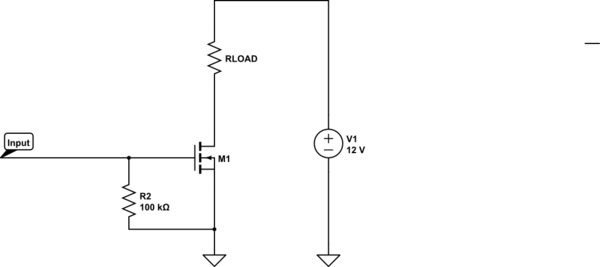I have a N-mosfet connected to an led through a resistor at 5V at the drain, a voltage source coming from another board through a board-to-board header and the source at ground. Regardless of the voltage sent to the gate (0V or 3.3V) the led is on. When probing voltage at the header (a direct connection to the mosfet gate) the voltage is near 0V (4mV). When probing voltage at the gate, the led turns off and the voltage remains at the unconnected multimeter voltage of ~200mV. What could be wrong with this circuit?
-
\$\begingroup\$ Just a friendly tip (although it might not be necessary for this question since you're pretty detailed about what goes to where): We do have a plugin where you can draw out schematics and load them into your question :) \$\endgroup\$– user103380Commented Aug 5, 2016 at 21:11
-
1\$\begingroup\$ Welcome on EE.SE. Please, keep in mind that this is not a general electronics forum. The goal of the community is to build a high quality knowledge base in Q&A form, therefore we ask any contributor to format her/his post in a way that benefits the whole community. Although you provided enough information in your question, posting a true schematic is highly appreciated. \$\endgroup\$– LorenzoDonati4Ukraine-OnStrikeCommented Aug 5, 2016 at 21:27
-
\$\begingroup\$ As @KingDuken already said, we have a browser plug-in that can allow you to do that, but a photo of a nicely hand-drawn schematic would also do. You can also use the schematic capture functionality of many freely available SPICE tools (e.g. LTspice). Using a screen capture program on your PC you can create a snapshot of the schematic and post it here as an image. \$\endgroup\$– LorenzoDonati4Ukraine-OnStrikeCommented Aug 5, 2016 at 21:27
1 Answer
The connection to the gate is open circuit (bad header, open trace, bad solder joint, something like that) so your multimeter internal resistance is discharging the gate capacitance and switching the MOSFET.
To prevent this sorta-working situation (among other things) it's good practice to put a high value resistor (such as 100K) between MOSFET gate and source near to the MOSFET. That way it will be reliably off if the connector is unplugged. It won't be a problem with a smallish LED, but if you had a substantial load on the MOSFET in comparison to its ability to dissipate heat, the MOSFET could be damaged by the input floating such that the MOSFET turns partially on. Since an SOT-23 MOSFET can switch amperes, this is not a silly concern.

simulate this circuit – Schematic created using CircuitLab
